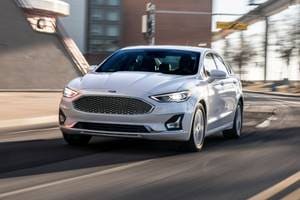What You Should Know About Mobility Vehicles
As you contemplate a new vehicle and evaluate whether it meets your needs for specialized mobility, you should consider a number of different factors that relate to its control layout and overall operation. Here are some of them:
Ignition Switch
Does the vehicle you're considering feature a dash-mounted ignition control? An ignition switch mounted on the dash typically requires a twist of the wrist to get the car started, which can be an issue for those with upper-body mobility challenges. Vehicles with keyless ignition or an ignition button on a center console require less driver dexterity.
Transmission
Is your potential new vehicle equipped with an automatic transmission? A vehicle with a traditional manual transmission that combines three pedals and a shift lever will naturally prove problematic, but the new breed of automated manuals with automated clutches and shift paddles on the steering wheel could offer an alternative to a conventional automatic.
Controls
Are the vehicle's knobs and switches large and easy to identify? Tiny knobs and switches can be daunting for those with manual dexterity issues. Additionally, switchgear that emphasizes buttons rather than knobs is ideal, as buttons call for simpler operation. Are the controls well placed? Ideally, controls should be strategically grouped so as to minimize difficult reaches for the driver. Some luxury vehicles are equipped with a touchscreen and/or voice-activated controls. If these options are within your budget, they're worth considering, as they can go a long way toward ensuring that your time spent in the driver seat is comfortable.
Shifter
Is the vehicle equipped with a shift lever that requires you to press a button before you can move it out of the Park position? This action can be difficult for those with manual dexterity issues and perhaps impossible for those with compromised upper-body mobility. A vehicle with a shift lever attached to the steering column circumvents these issues. Some electronic controllers for transmission shifting are particularly easy to operate, and the availability of shift buttons or shift paddles on the steering wheel also can afford a measure of improved control for physically challenged drivers.
Locks and Windows
Does the vehicle feature power-operated door locks and windows? If you're operating your vehicle with hand controls, bear in mind that power windows are especially useful at toll booths, when one hand will have to be on the steering wheel and the other on the brakes. Most vehicles with power windows offer a one-touch down feature for the driver window, and one-touch up convenience is increasingly available as well. Luxury vehicles typically offer one-touch control for all windows.
Seats
For people with certain mobility challenges, bench seats are preferred, as they are roomy and easy to access. In any case, seat height is a crucial consideration for easy ingress and egress. Also consider whether the vehicle offers a power-adjustable driver seat, since it can be adjusted for comfort and better control access. For long-duration driving, heated seats might be a good thing, but they might prove problematic if they're adjusted to deliver too much heat.
Entry
Consider the vehicle's access. Does it offer remote keyless entry? The twisting that's required to place a key in a lock and open a car door can be difficult or impossible for those with upper-body mobility issues, while remote keyless entry systems make getting into your vehicle a snap. Are the door openings wide enough to allow easy ingress and egress? For those with lower-body mobility challenges, wider door openings help facilitate easy loading and unloading of wheelchairs. Seat height is equally crucial. Carefully evaluate your vehicle to ensure that you're able to come and go with ease.
Pedals
Does the vehicle you're considering offer adjustable pedals? This feature allows the driver to optimize the seating position. For those with compromised function in the lower extremities, such a feature might enhance vehicle control as well as driver comfort.
Cruise Control
Cruise control enables the driver to set vehicle speed on the open road, a feature that enhances driver comfort for those with compromised function in the lower extremities. Even more useful is adaptive cruise control, which automatically decreases vehicle speed to keep a safe distance between your vehicle and the one ahead, enhancing safety as well as convenience.
Availability of Models With Adaptive Equipment
Some vehicle manufacturers offer factory-installed mobility packages designed for those with mild to serious mobility challenges, which relate to age as well as past injury. These packages consist mainly of deletions designed to facilitate the transportation of mobility-related equipment. Wheelchair users with limited upper-body mobility might not be able to fold and then deploy a wheelchair, so a van-type vehicle equipped with a ramp or lift might be useful. Conversion companies can outfit certain minivans with such mobility equipment. Some manufacturers offer mobility programs that include discounts or compensation to offset the cost of a vehicle conversion. Chrysler, Ford, General Motors, Honda, Hyundai and Toyota all have mobility programs in place. NHTSA also offers information about other cost-saving programs for mobility-challenged drivers.





